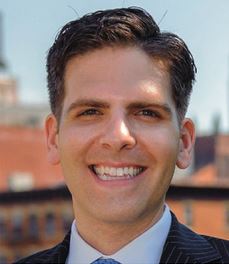Share This
Related Posts
Tags
Risk Management
By Keith Loria on Aug 3, 2015 in News
Apartment owners and management companies have a lot to worry about in keeping their communities safe and secure, and there are always new factors emerging to further add to the complexities of risk management.
Multi-Housing News reached out to property owners, property managers and the insurance companies who cover them to see what the top risk concerns are in 2015, and the challenges of insuring those risks in the years ahead.

Mark Mascia
What type of risk are you or your company most concerned about insuring against today?
Mark Mascia: Cap rate expansion outpacing rental growth. The market has seen phenomenal growth in rents with limited new supply to slow it down. However now that cap rates are at historically low levels throughout most markets in the country there isn’t a whole lot of room for them to go anywhere but up. So as cap rates expand lowering the value of their property they need to keep increasing rents just to stay even on values. For longer-term cash flow owners this isn’t as much of a concern, but for REITS with mark to market pricing and for companies who had short-term business plans this is a real risk to their investments.

Heidi Much
Heidi A. Much: For Village Green, we’re trying to get our arms around our cyber exposure. We all use a multitude of providers in our industry—someone who does your accounting data, your rider insurance, your employee screening—and while we don’t necessarily have confidential information stored, we are using providers who have that information stored. We’re trying to understand what’s out there, what are they doing, what is their disaster plan and recovery plan?
Steve Heimler: Number one is a data breach. Everyone is a target, and we do have information in the hands of a special leasing agent who has access to all the data of an entire property. It’s a low-level employee who goes rogue on you, that’s who we are worried about.
How do you deal with the challenges of insuring against this risk?
Mascia: The best bet is to choose a long view on the investment and structure your debt to take advantage of low rates locked for long periods of time. If your costs are locked on the debt side, and demand for apartments stays high (which they should) the change in value short term due to cap rates won’t hurt you. Who cares about the value of the asset on a day-to-day basis? It is more about the cash return you locked in for the long haul.
Much: Our motto is to be proactive. Insurance is one vehicle to handle a risk but there are a lot of other ways contractually to manage risk that I think are much more effective. We really look at our contracts and what we hold people responsible for and what insurance they carry to provide the financial backing for what we hold them responsible for. Many companies are taking a holistic approach to risk, so we’re looking at it across the entire enterprise.

Steve Heimler
Heimler: We have developed a protocol and some policies designed around minimizing the access to information, such as making authorities and permissions limited, depending on the position within the organizations.
As an insurance company working with multifamily developments, what do you find apartment companies are most concerned about insuring against today?

Steven Sachs
Steven W Sachs: It all depends on who you are, what class of asset you have and where you’re located. If you have a lot of CAT exposures (e.g. Florida, California) and you have wind, earthquake, flood and to some extent hail, your property costs are more significant and those are a larger concern. From a liability standpoint, underwriters are really looking at crime exposure and are now doing zip code analysis on every area, and there’s stricter liability for the property owner. Cyber is another that is coming up much more.
Michael Stern: The obvious catastrophic exposure for rental properties is uncontrollable natural disasters such as hurricanes, earthquakes, flood, hail and tornadoes. However, these are risks that insurance companies feel they are able to quantify and price through various risk modeling tools and spread of risk. The risk that is harder to quantify is rooted in the occupants that inhabit the rental properties. These “resident sponsored events” can manifest themselves in a variety of ways but many times create damage to the owner’s property through perils such as fire, smoke, explosion or sewer backup. These can be small nuisance claims or completely destroy a building.
This damage is the responsibility of the resident but many times they have no financial ability to pay and do not have adequate insurance. These attritional losses can create significant financial harm inside an owner’s property insurance deductible (because many times multifamily operators carry larger deductibles) and drive up premiums over time.
MHN: How do you deal with the challenges of insuring against this risk?
Sachs: From our perspective, it’s being an advisor to a client and not just selling them insurance. It’s balance sheet protection so whether it’s cyber or environmental, you’d be surprised how many multifamily owners don’t buy that and feel they are immune. It’s why you buy umbrella insurance, and it’s why you should strongly buy both environmental and cyber, and if you really don’t think it can happen to you, then buy it with a high retention.

Michael Stern
Stern: There is a trend in the industry that really caught steam about five years ago that multifamily operators are now requiring their residents to carry a minimum level of liability insurance. Liability insurance is the only line of insurance that the managers can require because they must have an insurable interest to require it and that would only include the buildings they own. Therefore, these liability policies, which typically carry a $50K or $100K minimum, cover the owner’s property if a tenant causes damage due to negligence. This requirement, along with a well-structured property policy, will provide protection for a multifamily owner or operator.
Participants
Mark Mascia, founder and CEO of Mascia Development, New York, N.Y.
Heidi A. Much, vice president, risk management services for Village Green, Farmington Hills, Mich.
Steve Heimler, president of Cirrus Asset Management, Inc., Calabasas, Calif.
Steven W Sachs, executive vice president, director real estate and hotel practice, Willis Group, Hunt Valley, Md.
Michael Stern, CEO of Stern Risk Partners, Atlanta, Ga.
